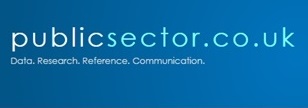By Barley Laing, the UK Managing Director at Melissa
As public sector services become increasingly accessible online due to the pandemic and improving technology, there has been a corresponding growth in fraud. According to the Cabinet Office fraud and error in public spending are estimated to cost the taxpayer up to £51.8 billion every year, which is larger than the UK’s annual defence budget.
With precious budgets under risk from fraudulent activity, undertaking effective ID verification, behind the scenes in real-time when people sign-up for a service, has become an essential.
Forward thinking public sector organisations are already using identity verification services, such as electronic ID verification (eIDV). These tools deliver cross-checks against an individual’s contact data in real-time, as they complete an online application process, whilst ensuring the user experience isn’t compromised.
Clean data powers ID verification
While undertaking ID verification will remain vital, the cost of it can be reduced and fraud will much less likely to occur for those that have ongoing processes in place to ensure data hygiene. For example, address validation, for proof of address, is about matching a name to an address, and is a crucial part of the data hygiene process. It highlights those who provide an inaccurate address, whether that’s because of a typo or they have entered an inaccurately formatted address, which then can be easily corrected. It also flags those who are providing an address they are not associated with, therefore potentially providing an inaccurate address for fraudulent purposes.
Because ID checks will pick up rudimentary things, such as an incorrectly formatted address, it’s much better value and best practice to ensure you have accurate user contact data in the first place, prior to undertaking ID verification.
A data hygiene first approach is not only important for identity verification. Accurate data on users also enables the public sector to obtain valuable insight, such as a single customer view (SCV). This insight can be used for better targeting, including personalisation with communications.
Unfortunately, 91% of organisations have common data quality problems, with user contact data degrading at 25% a year without regular intervention. Also, 20% of addresses entered online contain errors, such as spelling mistakes, wrong house numbers and incorrect postcodes.
The good news is incorrect contact data, such as name, address, email or telephone number, can be easily fixed, often with simple and cost-effective changes as part of their data quality regime. This should involve cleansing and standardising held user data to deliver data quality in batch, as well as when new data is collected, in real-time. The cleansing tools used in this process should be able to enhance the data by filling in any missing contact details.
Four steps to clean databases:
- When it comes to the data cleansing process one of the most useful tools for the public sector is an address autocomplete or lookup service, which enables address validation. These can gather accurate address data in real-time at the onboarding stage – vital during a period when many people are completing contact forms on small mobile screens where they are more liable to make mistakes. They also enable those in the public sector to deliver a standout service by reducing the number of keystrokes required—by up to 81 per cent—when typing an address. This speeds up the onboarding process, reducing the probability of the user not completing an application or making a purchase.
- Duplicate data of those on your database can be an issue. It’s commonly caused when two departments merge their data and by mistakes in contact data collection at different touchpoints. This adds cost in terms of time and money, particularly with duplicate printed communications, which can also adversely impact on the sender’s reputation. The recipients will see this as a waste of public money, at what is a challenging time for public sector finances. To prevent this, source an advanced fuzzy matching tool to deduplicate data. By using such a service, and merging and purging the most difficult records, you save money with communications and improve the user experience.
- Data suppression strategies help those in the public sector highlight people who have moved or are otherwise no longer at the address on file. As well as removing bad addresses, services that include deceased flagging ensure mail and other communications are not sent to those who have passed away, upsetting their friends and relatives. It’s not only ethical to use these suppression strategies, but it also helps public bodies to save money and protect their reputation.
- Once you’ve deployed the basics to ensure accurate customer data, artificial intelligence (AI) can add even greater value to the data you hold. For example, a type of machine learning called semantic technology can readily deliver high value, in-depth intelligence on users of your services. Semantic technology, or semtech, associates words with meanings and recognises the relationships between them. It operates by delivering powerful real-time connections between records, combining the missing pieces of data to support an informed decision about the content of a communication to a user.
A data hygiene first approach is vital for ID verification. It’s only by having clean data that you can effectively, and at low cost, undertake identity verification, and reap the additional benefits of having accurate user data, such as improving targeting and delivering a better experience for those using your services.
For more information about Melissa and how our data quality and ID verification services can help you not only clean your data but prevent fraud, please visit: Melissa, email: barley.laing@melissa.com or call: 020 7718 0070.








Recent Comments